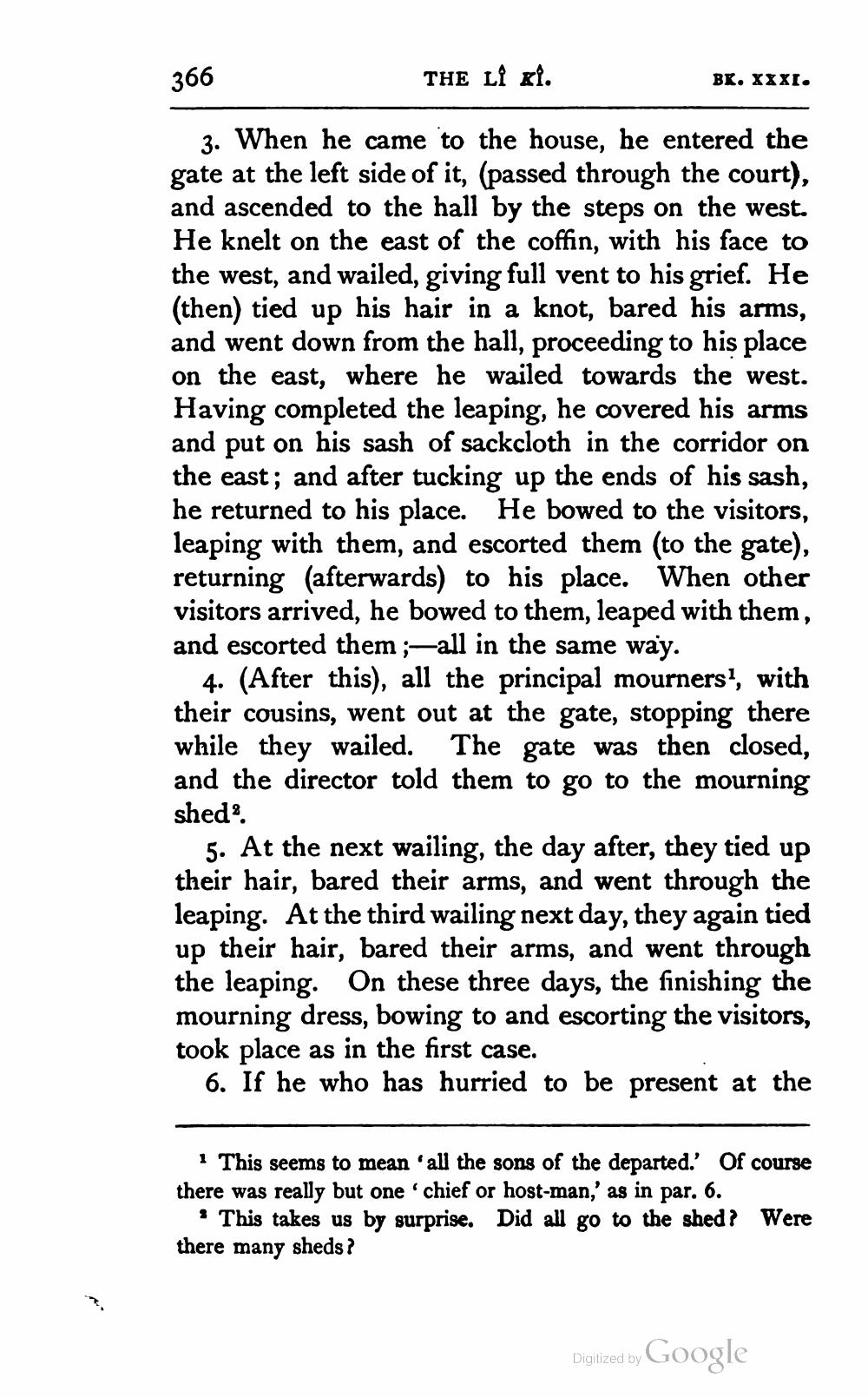________________
366
THE LÎ xi.
BK. XXXI.
3. When he came to the house, he entered the gate at the left side of it, (passed through the court), and ascended to the hall by the steps on the west. He knelt on the east of the coffin, with his face to the west, and wailed, giving full vent to his grief. He (then) tied up his hair in a knot, bared his arms, and went down from the hall, proceeding to his place on the east, where he wailed towards the west. Having completed the leaping, he covered his arms and put on his sash of sackcloth in the corridor on the east; and after tucking up the ends of his sash, he returned to his place. He bowed to the visitors, leaping with them, and escorted them (to the gate), returning (afterwards) to his place. When other visitors arrived, he bowed to them, leaped with them, and escorted them ;—all in the same way.
4. (After this), all the principal mourners', with their cousins, went out at the gate, stopping there while they wailed. The gate was then closed, and the director told them to go to the mourning shed.
5. At the next wailing, the day after, they tied up their hair, bared their arms, and went through the leaping. At the third wailing next day, they again tied up their hair, bared their arms, and went through the leaping. On these three days, the finishing the mourning dress, bowing to and escorting the visitors, took place as in the first case.
6. If he who has hurried to be present at the
1 This seems to mean all the sons of the departed. Of course there was really but one chief or host-man,' as in par. 6.
* This takes us by surprise. Did all go to the shed? Were there many sheds ?
Digitized by Google




